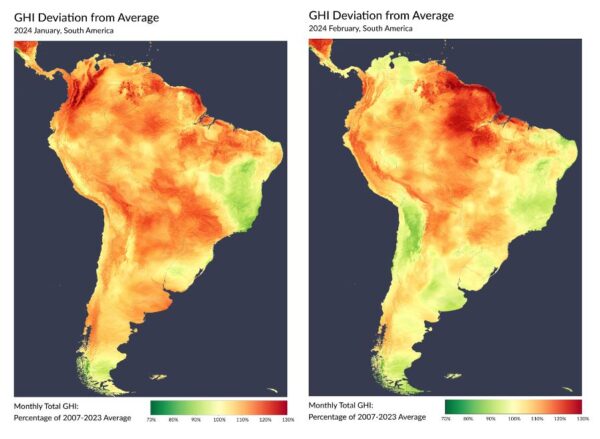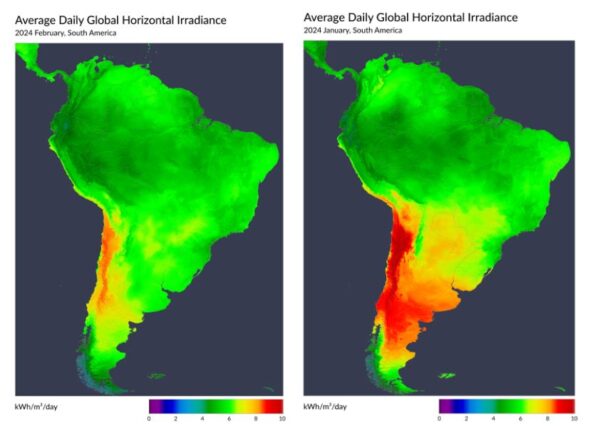In a new weekly update for pv magazine, Solcast, a DNV company, reports that Chile, Uruguay and Argentina saw irradiance up 5% to 15% above normal in January and February. Responsible for the surplus sunlight across South America was the ongoing Amazon drought, and circulation changes that pushed weather fronts further south of the continent than usual.

The Latam region has started 2024 greatly exceeding its average solar production performance, according to analysis completed using the Solcast API. Long term analysis showed that during January and February, Chile, Uruguay and Argentina saw irradiance up 5% to 15% above normal. Brazil as a whole was around 20% above normal, although the solar production regions in the east had mixed results.

Responsible for the surplus sunlight across South America was the ongoing Amazon drought, and circulation changes that pushed weather fronts further south of the continent than usual. Summer in the Amazon is normally characterised by hot and humid conditions, and afternoon thunderstorms driven by evaporation and resulting convective cloud. With the current long term drought, there is not enough
moisture to drive this evaporative process, contributing to the widespread above average irradiance.
Central America also saw irradiance well above normal, about 20% up along the isthmus and also extending north into Mexico. The sunnier skies were driven by weaker-than-usual Caribbean tradewinds failing to push moisture onshore. Some areas saw up to 30% more irradiance than normal, including regions in equatorial Brazil, French Guiana, Suriname, Guyana, Venezuela and Colombia.
The data, which Solcast creates using satellite data calibrated to ground measurements, showed that Chile and Argentina were the sunniest places in the region during January and February, averaging 8-10 kWh/m2/day. Chile saw the highest total irradiance, continuing the pattern of seeing some of the highest irradiance in the world.

Solcast produces these figures by tracking clouds and aerosols at 1-2km resolution globally, using satellite data and proprietary AI/ML algorithms. This data is used to drive irradiance models, enabling Solcast to calculate irradiance at high resolution, with typical bias of less than 2%, and also cloud-tracking forecasts. This data is used by more than 300 companies managing over 150GW of solar assets globally.

